For some reason, I have to post this on my blog to establish its existence with Technorati. Search me as to why, but here it is:
3FEBNN3CXVCU
For some reason, I have to post this on my blog to establish its existence with Technorati. Search me as to why, but here it is:
3FEBNN3CXVCU
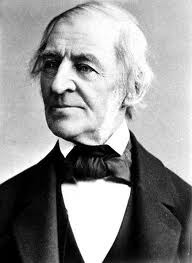
A lovely article about Ralph Waldo Emerson in my favourite magazine this month. Here’s a quote of his to put in your pipe:
Days . . “come and go like muffled & vague figures, sent from a distant friendly party; but they say nohting, & if we do not use the gifts they bring, they carry them as silently away . . . I find no good lives. I would live well. I seem to be free to do so, yet I think with very little respect of my way of living; it is weak, partial, not full & not progressive. But I do not see any that suits me better. . . We are all dying of miscellany”
Or,even worse:
“After thirty a man wakes up sad every morning”
Occasionally one comes across people (ie. morons) who think that feminism’s work is done, or that being a feminist is in some way an old fashioned notion.
These morons need to look at this: VIDA’S THE COUNT. Don’t bother with the text at the top, just look at the pie charts, and feel your mind boggle. It’s a comparison of the numbers of books reviewed in major magazines broken down by gender. For example, The Times Literary Supplement, in its wisdom, found 1075 male writers worthy of review, and just 378 female. Take that ladies.
Here’s another:

Meghan O’Rourke at Slade has an interesting take on all this, particularly as regards unconscious bias. She points out, in an interesting parallel, that once blind auditions were instituted for major orchestras, the recruitment of women went up – well, let’s see if you can guess how much:
a) Not at all
b) Only a teensy tiny bit
c) TENFOLD.
Yeah. Damn skippy.
See also the Franzenfreude debate, where there was much discussion around whether Jonathan Franzen FREEDOM would have been so celebrated, given its domestic setting, were it written by a woman.
What we have learnt from this is that when I become a famous author, I am so going to go by the name S.M NORMAN.

I was obsessed with this movie as a teenager: I used to watch it over and over again. I found this copy of the book in my parents’ bookcase: a charming old hardback, printed 1951, with thin pages and small type, and none of these frills like author bios or blank pages at the beginning or end. Awesome. I was about to go on very long flight, and I knew it would be my friend. AND OH GOD. Was it. This book is the ultimate page turner.
For those of you who have been living under a rock since you were born, here is the plot:
Scarlett O’Hara is a beautiful southern belle, chased by all the boys, except the one she really wants: Ashley Wilkes, a dreamy gentleman to whom she is completely unsuited. The Civil War ensues, and in a suitably panaromic and dramatic fashion throws something of a spanner into all sorts of plans, including the romantic; and Scarlett does not have time to chase beaux, what with nursing dying Confederates, fighting her way through the siege of Atlanta, and eventually running her family’s ransacked plantation on her own, picking cotton, fighting carpetbaggers and so forth.
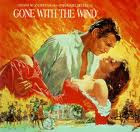
She has always been a practical, opportunistic woman, but after the War becomes even more so, convinced that money and security are more important than any conception of honour or history. Throughout all this epic drama she has been assisted by the dashing Rhett Butler, who she eventually marries. It is painfully apparent to us (especially those of us who were obsessed in their adolescence) that of COURSE Rhett loves her and of COURSE they are perfect for each other; but she is too obsessed with Ashely to see it. Eventually she realises in the second to last chapter the error of her ways, and that of course Rhett is the man for her! Hurray! But WATCH OUT MARGARET MITCHELL IS ONLY MESSING WITH YOUR MIND because the book ends with Rhett leaving her, saying it is too late, and he is too tired to start again.
In short, I did not go to bed till like 2am last night.
So on the plus side: what an page turner, what an epic! Also, what a feminist! I seriously cannot believe it was published in 1936. Scarlett is so unapologetic about not being feminine, and Mitchell is so unapologetic for her. She is a businesswoman, and a battler. She is completely uninterested in her children (brilliantly, “Death and taxes and childbirth! There’s never any convenient time for any of them.”), in a way that I think even a contemporary author would hesitate with. I was not surprised at all to learn that Mitchell’s mother was a suffragist.
On the negative side: it is in some ways really, really racist. “The darkies are so stupid,” is a sample. There’s several lines like that that stop the page turning, and no two ways about it, it’s not nice. On the other hand, there are lots of fully realized, and within this author’s world view, very positive presentations of individual black people. One is ‘Mammy,’ O’Hara’s nursemaid, which is clearly a stereotyped role.
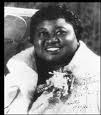
In the movie the part was played by Hattie McDaniel, who won the first Oscar ever given to an African-American for the part (look here for her stylish acceptance speech; try not to compare with Halle Berry). She was criticized for playing a stereotype, and replied, pithily, “I’d rather play a maid for $700 a week than be one for $7”. She was the daughter of freed slaves, so presumably she had a fairly intimate perspective on the matter.
There are also several plot strands dealing with slaves who were unhappy in freedom, which is interesting, and not a perspective you often hear; and several strands dealing with Northerners who were far more unpleasant to, and dismissive of, individual black people than the former slave owners. Suggesting I suppose the uncomfortable truth that it’s not all black and white.

This is a really charming little tale of contemporary Zimbabwe.
We’ve recently discussed in this blog (here) how much Zimbabwean literature is about either a) the war or b) ticking the boxes of international interest. THE HAIRDRESSER OF HARARE triumphantly does neither.
The story focuses on Vimbai, a top hairdresser at Mrs Khumalo’s salon. Her life changes when their first ever male hairdresser, Dumi, begins work at the salon, and proves to be serious competition. He is however a pleasant and retiring man, and eventually becomes her lodger. He invites her to a family wedding, and she is surprised by the great wealth of his family (from whom he is mysteriously estranged), and also by the fact that he refers to her as his girlfriend.
She begins to come round to this idea, and he becomes a big part of her life. She does indeed eventually become his girlfriend – in all ways except the pesky physical.
I think you can guess that this well-dressed hairdresser, with little interest in Vimbai, is as G-A-Y as you like. She is horrified, and when she discovers that he has a high profile lover in the government, lets his wife know. Dumi is duly beaten to a pulp by the CIO, and Vimbai is filled with remorse. In at not very believable turn of events, he forgives her, and then somewhat more believably, flees the country.
So, an interesting tale, well told. Lots of very sharp comic writing, with a warm heart behind it. Most impressive though is its lively and unselfconscious evocation of contemporary Harare. The kombis, the sugar queues, the Churchill boys; they are all handled with a lightly comic touch, and given a warm reality. The lack of ‘explanation’ (for some imagined international audience) is sort of remarkable. THE HAIRDRESSER OF HARARE is not perhaps a perfect book, but it is one with a genuine and unaffected contemporary Zimbabwean voice, and I haven’t come across too damn many of those. So many congratulations to Mr Huchu.
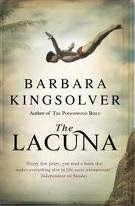
This book is 636 pages long. Now, bizarrely, by about the 300s I was already bored/irritated; but somehow I have managed to finish it. And it wasn’t so bad in the end.
The book is in the form of diary entries and letters. This is a really hard way to try and write a piece of fiction, and while it can succeed (fabulously, as Dodi Smith I CAPTURE THE CASTLE) it can also lack credibility and be so pretentious as to make you want to scream (THE LACUNA).
In this irritating format we follow the story of one Harrison Shepherd, born to a Mexican mother and an American father in Virginia. The book begins when Harrison is twelve and his mother takes him with her on a mad dash with a lover to Mexico.
There are some good bits, evocative and funny, early on, while it it still a young boy’s diary, such as:
Sunday is the worst day. Everyone else has family and a place to go. Even the bells from the churches have a conversation, all ringing at once. Our house is like an empty cigarette packet, lying around reminding you what’s not in it. The maid, gone to mass. Mr Produce the Cash, to the wife and children. Mother rinses her girdles and step-ins, flings them on the rails of the balcony to dry, and finds herself with nothing left to live for. Sometimes when there isn’t anything in the house to eat, she says, “Okay kiddo, it’s dincher dinner.” That means sharing her cigarettes so we won’t be hungry.
Harrison is not given much of an education and eventually ends up working as a cook and then a typist. Ridiculously, he finds this employement with Diego Rivera and Frida Kahlo at the time that Trotsky is staying with them. This must be among the least believable presentation of historically famous people it has ever been my misfortune to read. The author clearly went on a tour of the Rivera/Kahlo house in Mexico City, and thinks she is terribly clever to have noticed that the kitchen was small, and difficult for the cooks. Oh, what a sense of the reality of their lives! What a brilliant conjunction of art and the everyday! Why don’t I just puke right now.
He then moves to the US, where he becomes a famous author. Also pukily, he manges to be involved tangentially in the internment of Japanese Americans and the Communist witchhunts. He also manages to have incredibly stilted dialogue with this secretary. Fix your eyes in your sockets for this sample:
“Well, people think that. And taking the Fifth means you’re guilty.”
“Whatever they may think, it does not. A blank space on a form, the missing page, a void, a hole in your knowledge of someone – it’s still some real thing. It exists. You don’t get to fill it in with whatever you want, Mrs Brown.”
Do you see what she’s doing there, title wise? It’s truly incredible how often the author manages to introduce the title of her book in different ways. Was it some kind of weird literary bet?
Overall, I feel mean saying it, but it’s a sweet relief with Mr Shepherd dies.
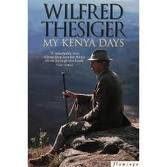
I found this randomly in the bottom of a cupboard. Wilfred Thesiger is apparently a fairly famous explorer. Born in 1910, he travelled very widely throughout his life, to areas then wild and untouched.
It is almost like he got in just under the wire: when there were still wild areas of the world that weren’t online, or at least on a National Geographic special. This book is written when he is 84, and he clearly feels cramped in our smaller and more interconnected world.
At first glance he would appear to be a typical product of a certain kind of privilege: born in Africa, to a father in the Colonial Service, then Eton, Oxford and a life of travel across Africa and the Middle East, producing books with exceptionally dubious titles: ARABIAN SANDS, VISIONS OF A NOMAD, THE MARSH ARABS. One feels that one gets the picture. However, let me tell you, the picture is not at all what one would think.
He was miserable at Eton and Oxford, and you gets the impression that he scrabbled to get back to Africa like a drowning man. He travelled always on foot (and we’re talking across the DESERT, chaps. Across the wilder bits of the African savannah) for months at a time. He travelled, and often lived for long periods (like years) with local people. He was in short, entirely, and amazingly, bush.
Also amazingly, he has managed to write a rather boring book about it. Given this kind of source material, this is quite a feat. It is mostly just an account of dates and places, and people’s names, without very much life to them. The rather unfortunate title MY KENYA DAYS gives you a sense of the kind of novelistic ambition we have here. Or don’ t have.
It gets most interesting, actually, when he talks about his current life. He is living with some of his travelling companions, Kenyan men, and their families. He eats goat stew every day, sleeps in a room with five other people, and seems terribly happy. He rather charmingly rambles on in old man style about their various dogs, and the funny things they do, and the children: Sandy, Talone, and Bushboy. He talks about how lonely he would be in the flat he still owns for some inscrutable reason in Chelsea, and ends the book with this: “It is here, among those whose lives I share today, that I hope to end my days.”
An impressively original man. One of his books is called THE LIFE OF MY CHOICE, and I kind of felt that I could see that he really he is one of those few who actually do make their own choices.

I found this a very touching little novel.
It begins like this: “When George J George mistook his white Ford Escort for the moon, he knew that his time was up. He would turn his face to the evening star and, guided by the nests of whitebrowed sparrow-weavers, keep walking.”
This actually gives you quite a neat little sense of the novel; it’s absurdity, it’s sweetly comic nature, and the way it combines urban and rural, or old and new, Zimbabwe.
Mr George is an English teacher at a private school in Bulawayo. He has started drinking, and is eventually fired when a school boy prank means he hangs a portrait of Ian Smith up where a portrait of Mugabe should be, right before a government visit. His problems only really begin however when he backs his uninsured old car into the spanking new 4×4 of a government minister’s mistress. He cannot pay for the damage, and so in a surreal turn of events the mistress, Beauticious, is able to take possession of his house, and he becomes her domestic servant. He is occasionally arrested, when the police chief needs a free English lesson, and becomes weaker and weaker – the implication is he has some kind of cancer of the colon. A small, silent child is abandoned outside the house, and he cares for her. He is able to deduce where she comes from, and determines to walk her back there. He burns all his identity documents and sets off with the child, using his deep knowledge of and love for the bush to guide him. He manages to return the child, and takes himself off to the bush fort where his grandmother was born, to die.
Here’s the last lines: “By the time he arrived at Fort Mangwe he was literally crawling on his bloodied hands and knees. The ruin was surrounded by whispering grass. He managed to climb over the low stone wall into what remained of the enclosure where his grandmother had been born, and there he died. George had done his duty.”
This makes ABSENT sound like a rather dark book, and it’s not. It’s mostly written with a comic edge. Eg. “The verges on either side of the road were teeming with grasses of every variety, testimony to a good rainy season, and a bankrupt municipality.”
This small novel operates on a very lage number of levels. On one level, its a vicious satire on the new economic elite of Zimbabwe: Beauticious and the minister are presented with appalling clarity, with their BMWs they can barely drive, their refusal to return anything they hire, and their sense of entitlement, and on some level the novel could be read as being entirely about the patronage culture.
It could also be read as some kind of arc of the white experience in Africa. The book makes a very confident claim to a coherent white African identity, and let me tell you, that is not something you meet everyday. The passage of his family’s silver into the hands of Beauticious is clearly a metaphor that just keeps on giving. The long trek through the bush that George knows and loves so well, back to his family’s beginnings, is another.
George is constantly giving English lessons, to Beauticious’ children, to the police chief, and the figures of Lear and Hamlet loom large across the story. There is something here about the importance of great books, across all ages and continents, from Europe to Africa. There’s also something about retaining your own sense of meaning in the face of general collapse. In this context, George’s almost suicidal determination to save one small child who he doesn’t even know is curiously touching, and stands as a rebuke to the Zimbabwe he is living in. The last section, where they follow the white-browed sparrow weaver’s nests into the bush and towards her home, is very sweet, and very sad.
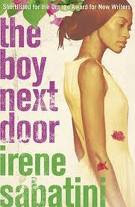
THE BOY NEXT DOOR tells the story of one Lindiwe, who is mixed race (coloured, in Zimbabwean terms), and lives next door to a white boy named Ian. We are first introduced to the pair as teenagers in the 1980s in Bulawayo, Zimbabwe’s second city. Lindiwe is fascinated by Ian, in part because he is suspected of having set his abusive step mother alight, and the 1980s sectin of the novel ends with an aborted attempt by Lindiwe to run away with Ian to South Africa. We move forward some years to find Lindiwe at University. Ian re-enters her life and she is once again fascinated by him. We discover that she became pregnant by him on their trip to South Africa and, keeping it a secret from him, left the baby with her mother. Ian and she become a couple, and take that young boy back. We follow the ups and downs of their relationship, and the growth of their child, into the late 90s.
This book is very successful in recreating the Zimbabwe of the 1990s. This is a period that I actually remember, so it is something I can speak of with confidence. It is however a very 80s kind of 90s, if you know what I mean. Which perhaps you don’t. What I mean is this book begins in the 1980s, and the war and the Gukurahundi cast a very long shadow over the book as a whole. This gives the book very much the feel of a book of the older generation. It joins Mukiwa, say, as book for people older than me. I’ve long noticed that Zimbabweans are divided into those that remember the war, and those that don’t. Most books are written for and about people that do, and suggest that the war is the defining episode of Zimbabwean history.
In THE BOY NEXT DOOR we don’t go forward past 2000, and into the real Zimbabwean apocalypse. Perhaps because Ms Sabatini had already moved to Switzerland, where she now lives, by that time. For people of my generation, the collapse is of course the defining event.
As I mentioned previously in this blog, I went to a talk by another contemporary Zimbabwen author, Bryony Rheam, who felt that one reason she was finding it hard to be published internationally was the fact that publishers abroad wanted a story that ticked the boxes of political and social comment they expect from Zimbabweans – as if people are not leading private lives in collapsing countries! Ms Sabatini manages to tick boxes left and right.
So, I felt the Zimbabwean scene was well evoked, and the story fairly compelling – the surprise of a child, and the attempt to find a way to live together, all made me want to keep reading. The central mystery, of who set the stepmother alight, is never terribly interesting nor is it neatly resolved, and there’s a very unfortunately dubious attempt to get parents’ involvement in the war (yawn) to run as theme defining childrens’ lives in the present. Here’s an excellent, accurate review in the Independent. I wish theatre reviewers would be half as helpful.
The New York Times called FREEDOM “a masterpiece,” and I’ve seen it frequently referred to as the first great American novel of the 21st century. On the other hand, some critics think it’s not all that. I personally think it is all that.
I freaking LOVED this novel. As you could perhaps have predicted from my last post, written intemperately when I was only on page 38. Having now read all 561 pages, I’m here to report that FREEDOM is indeed a very fine novel. That it is also a bestseller goes some distance to restoring my faith in human nature that has been damaged previously in this blog by such painful episodes as PROMISES, PROMISES and THE REVERSAL.
FREEDOM tells the story of a marriage. It begins when Patty and Walter meet as undergraduates in Minnesota (Walter, I must point out, attends my undergrad Macalester). Patty is initially attracted to Walter’s best friend, the womanising musician Richard. She eventually marries Walter, as he is madly in love with her, and is a kind and caring man. They build a house in a neighbourhood on the up, have two children, and a relatively happy life. Patty struggles to understand her children as adolescents, is bored with staying at home, and has an affair with Richard. Walter becomes increasingly angry about what he perceives as the world’s descent into environmental cataclysm. Eventually the marriage crumbles. Patty has an unsatisfying relationship with Richard, Walter has a satisfying one with his young assistant, and then they get back together again.
This novel is wonderful in a number of ways.
1)It’s funny. See first post.
2)It’s accurate. For example, on a failing actress:
As if to compensate for her shortness, Abigail went long with her opening speech – two hours long – and allowed Patty to piece together a fairly complete picture of her life: the married man, now known exclusively as Dickhead, on whom she she’d wasted her best twelve years of marriageability, waiting for Dickhead’s kids to finish high school, so that he could leave his wife, which he’d then done, but for somebody younger than Abigail; the straight-man disdaining sort of gay men to whom she’d turned for more agreeable male companionship; the impressively large community of underemployed actors and playwrights and comics and performance artists of which she was clearly a valued and generous member; the circle of friends who circularly bought tickets to each other’s shows and fund-raisers, much of the money ultimately trickling down from sources such as Joyce’s checkbook; the life, neither glamorous nor outstanding but nevertheless admirable and essential to New York’s functioning, of the bohemian.
3)The man can manage a long sentences like there is no tomorrow. Or like he is a Victorian. See 2).
4)It covers an almost mindboggling amount of ground: cotemporary environmental issues, good and bad relationships, sibling rivalry, child-parent relationships, profiteering in the Iraq war, local governance, neighbourliness. It really is bizarrely both a domestic novel and a state-of-the-nation novel
The book comforted me by making me feel that life is long, and most people make a lot of mistakes in it.
I can conceivably see where you might find this book irritating: it is very much about middle class America. There is a big and slightly weird focus on sex as the ultimate determinant of a relationship, and on sibling rivalry as an explanation for all later relationships, which does seems a bit like someone might have had a bit too much therapy.
That said, I still thought it was wonderful.